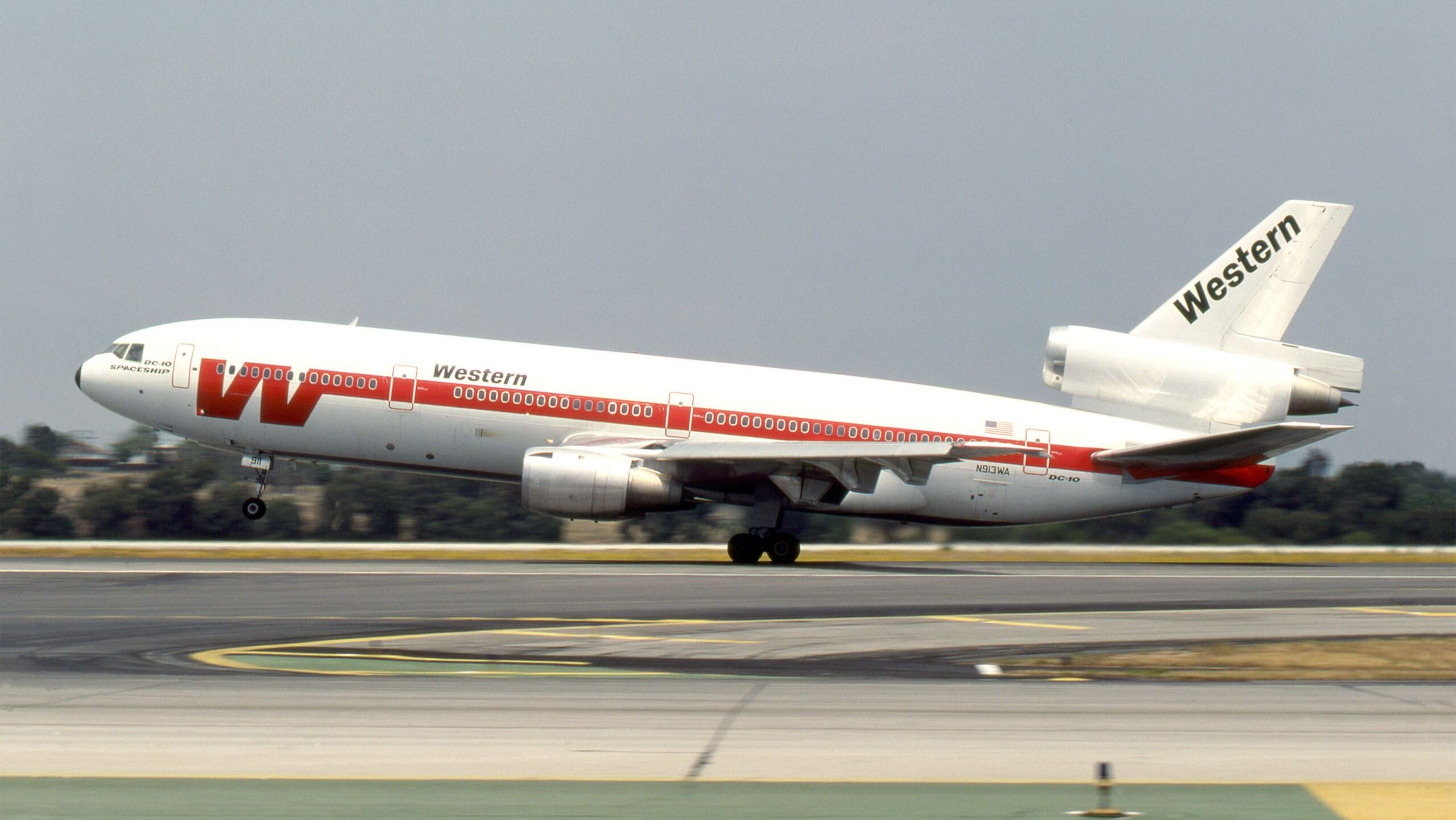Founded on April 17, 1926, Western Airlines was a California-based airline that operated flights throughout the Western United States and Canada. Later, the airline added flights to significant population centers on the East Coast and also flew internationally to London, England.
Before eventually merging with Delta Air Lines in 1987, Western Airlines had hubs at Los Angeles International Airport (LAX), Salt Lake City International Airport (SLC), and Stapleton International Airport (DEN) in Denver, Colorado.
Western started life as a mail carrier
Following World War One, there was a massive surge in aviation and the use of planes to deliver mail and other goods. During the early 1920s, the United States Government decided to offer exclusive contracts to airlines to transport the nation’s mail. Western Airlines applied for one of the mail contracts and was awarded the route between Salt Lake City, Utah, and Los Angeles, California.
By the mid-1930s, Western Air had introduced the new Boeing 247 aircraft and began flying seaplanes 22 miles across the Pacific from Montebello to Catalina Island. In 1928, the airline reincorporated as Western Air Express and purchased Standard Air Lines two years later. Expansion continued throughout the 1930s, and in 1937, Western merged with National Park Airways, opening up new routes, including one to Lethbridge, Alberta, Canada. By the 1950s, Western flew an extensive regional network, spanning as far south as Mexico City and as far east as Minneapolis, Minnesota.
During the 1950s, Western’s president, Terrell “Terry” Drinkwater, got into a dispute with the administration in Washington DC, and while being told by President Dwight D. Eisenhower to buy American-built aircraft, Drinkwater reportedly said:
“Mr. President, you run your country, and let me run my airline!”
After this exchange, Western was awarded no new routes, while competitors American Airlines and United Airlines increased their share of the market.
Western introduces Boeing 707s on several routes
In the summer of 1960, Western began flying Boeing 707s on many of its West Coast routes and expanded into Alaska after buying Pacific Northern Airlines. By the late 1960s, Western had almost an all-jet fleet, later adding nine McDonnell Douglas DC-10s in 1973.
Following deregulation, Western reduced its hubs to just two airports – Los Angeles International Airport (LAX) and Salt Lake City International Airport (SLC). At its peak during the late 1970s and 1980s, Western flew to Boston, New York, Miami, and Washington on the East Coast, and from its LAX hub, the carrier flew as far west as Hawaii, as far north as Fairbanks, and as far south as Acapulco in Mexico.
The carrier also operated transatlantic services to London Gatwick (LGW), operating a short-lived service from Honolulu to London via Anchorage, deploying its McDonnell Douglas DC-10-30s on the route. The DC-10-30 was the largest aircraft ever operated by Western, and the airline also used it to connect London with Denver, Las Vegas, and Los Angeles.
In addition to connecting large population centers, Western served several smaller communities across the plains and the Rocky Mountains, including West Yellowstone, Montana, near Yellowstone National Park. In 1986, Western entered into a codesharing agreement with SkyWest Airlines for the Utah-based airline to provide feeder flights for Western.
Western merges with Delta Air Lines
In 1978, Western agreed to merge with Continental Airlines, but soon entered a disagreement as to what the new airline should be called – Western-Continental Airlines or Continental-Western Airlines. A coin was reportedly tossed to decide the name, and the CEO of Continental Airlines at the time, Robert Six, was so disappointed with the outcome that he called the deal off.
The story of Western’s merger saga continued into the early 1980s, when Air Florida tried to buy Western Airlines, but could only purchase 16% of the airline. Western had faced years of financial difficulties, exacerbated by rising fuel prices and competition. Then, in September 1986, Western Airlines and Delta Air Lines agreed to merge, with Western becoming a wholly-owned subsidiary of Delta a few months later.
Western’s aircraft were subsequently repainted in Delta livery, including the DC-10s that Delta retired soon after as it already operated a very similar aircraft type – the Lockheed L-1011 TriStar. At the time of its merger, Western had nine active DC-10s and almost 50 Boeing 737s.
Between 1936 and 1979, Western Airlines aircraft were involved in several incidents, including crashes and hijackings. The deadliest incident occurred on October 31, 1979, when Western Airlines Flight 2605 crashed while landing at Mexico City International Airport (MEX) after a flight from Los Angeles. 72 of the 89 people onboard the McDonnell Douglas DC-10-10 died in the crash, in addition to one person on the ground.
Flight 2605 was one of three deadly crashes involving the DC-10 in 1979 – the other two were:
- American Airlines Flight 191, which crashed on take-off from Chicago O’Hare International Airport (ORD)
- Air New Zealand Flight 901, which came down during a sightseeing flight over Antarctica.
Did you ever fly with Western Airlines before its merger with Delta? Share your experiences by commenting below.






